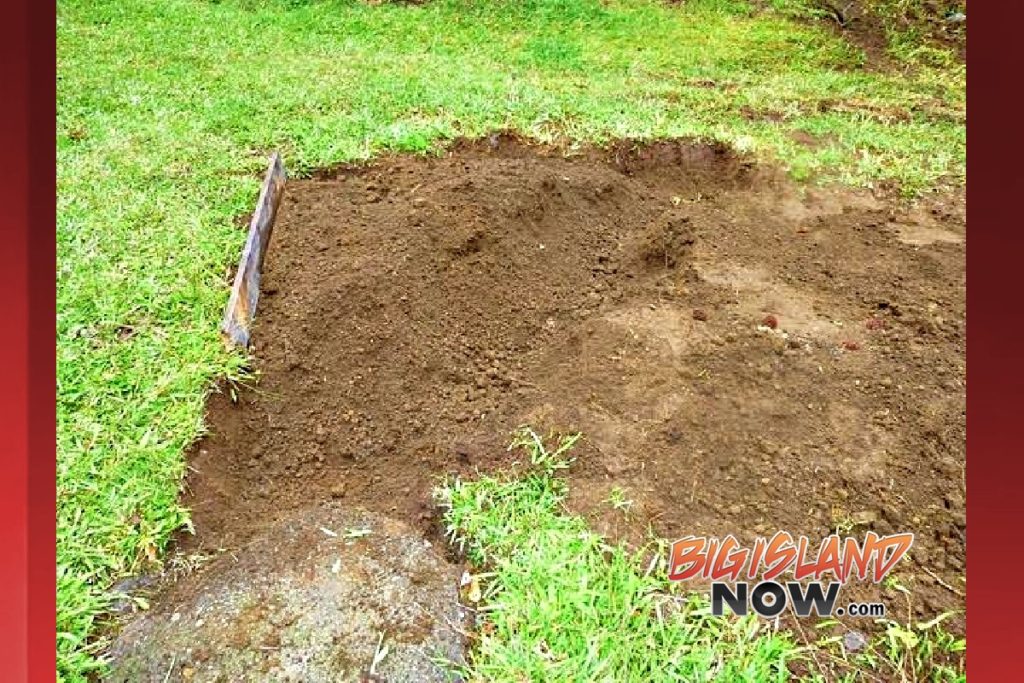The Barefoot Gardener: From the Ground Up, Digging In, Part 2

A new garden plot in the process of being dug in the author’s yard. On the left is already turned earth, on the right, a grass-cleared area that has not yet been turned. Photo: J.M. Buck
Earlier this week, we covered how to plan your new garden and remove grass from the plot. Hopefully, you all did your homework and have a nice bare square (or triangle or free-form design) of earth waiting to be turned into fluffy, plantable soil.
Dirt vs. soil
To create an environment that is conducive to gardening, it is important to understand the difference between dirt and soil.
Dirt is generally devoid of many nutrients essential for healthy plant life. Its composition can be hard-packed, light and dusty or sandy. If you dig up a shovel full of dirt, you will not see any insects or earthworms. Dirt will either turn into slick mud when wet or water will percolate through quickly, leaving little moisture. Only the hardiest of weeds can flourish in dirt.
Soil, on the other hand, is a living ecosystem. Usually light and fluffy in texture and brown-black in color, soil contains all the necessary elements for plant life: humus, bacteria, earthworms, compost, manure and other fertilizers. I will go into the specifics of soil structure later in the series.
If you have dirt, don’t worry. It can be turned into healthy, happy soil.
Dig it up
Now the hardest part of creating your new garden: tilling the soil. Having fluffy, well-amended soil is a must for successful gardening. Shortcutting this process can result in sickly plants and poor harvests, so taking a little time to do it right in the beginning will spare a lot of disappointment later.
There are a number of ways to loosen your soil, the biggest consideration being the size of your plot.
For a small garden plot, turning the soil with a shovel is fine.
First, dampen the area where you are going to dig. Don’t allow water to pool; this can make the ground boggy and turn digging into an unpleasant weightlifting workout. Starting from a corner, drive the shovel as deep as you can. Then turn the soil over, dropping it back into the same place it was dug from.
Keep repeating this, working your way down the edge of the plot until you get to the other side. Move over one shovel’s width and using the same method, work your way back along the edge of the soil you just turned. Keep doing this until the entire plot is turned.
For moderate-sized plots, a rototiller is the way to go. There’s a number of different types and sizes of tillers, from the lightweight Mantis (I don’t recommend these for anything other than the lightest jobs) to 10-horsepower-plus rear-tine tillers. The most popular tiller for home gardeners is a three or five horsepower front-tine tiller. They run anywhere from $200 to $500.
You can rent a tiller for a day from anyplace that rents tools. You can also look online at Craigslist.org for people advertising rototilling services. If you are serious about having a year-round producing garden though, you will save cash in the long run by buying your own tiller.
When tilling, use the same pattern described above, except run the tiller tines halfway across the previously tilled row when going back the opposite direction.
Finally, for those with a very large plot, hiring an excavator familiar with digging gardens is the way to go. Just mark out where you want your garden and let the excavator go for it.
Next week, I’ll discuss how to turn dirt into soil.
Happy gardening!












